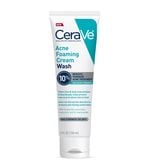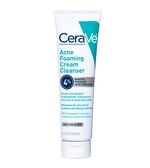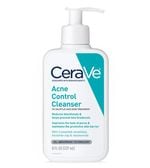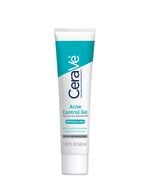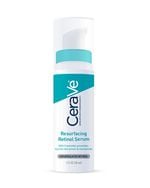Acne
How To Acne 101
If you frequently experience acne breakouts, chances are you spend a lot of time wondering what’s causing your acne blemishes. Unfortunately, misconceptions and myths about acne are common. Ahead, we’re clearing them up. Learn what can contribute to acne and how to effectively tackle acne breakouts in this guide.
Acne Facts & Fiction
Studies show that up to 85% of people experience acne at some point in their lives.1 Despite its prevalence, there are many misconceptions about what can cause acne and how to manage it. Making matters (seemingly) more confusing is that there are many different types of acne, including blackheads, whiteheads, and pustules. Here, we’re breaking down a few common myths about acne to help you better understand how to address this skin concern.
Acne Myth #1
Fiction: You shouldn’t moisturize if you have acne
If your skin is on the oilier side—as acne-prone skin often is—you may feel that moisturizing will only make it worse. In reality, moisturizing is an essential part of maintaining an effective skincare routine. This holds true for all skin types, including acne-prone skin.
Fact: Moisturizing is essential in any acne skincare routine
Skipping moisturizer can leave your skin feeling dehydrated, which, in turn, can cause it to produce excess sebum (oil) in an attempt to compensate. Ultimately, this heightened oil production can clog your pores and lead to acne breakouts. To help keep your skin moisturized without aggravating your acne, we recommend looking for lightweight, non-comedogenic moisturizers. During the day, use a moisturizer with sunscreen.
Acne Myth #2
Fiction: You need to use multiple products to clear acne
If you have acne, your impulse may be to pile on as many acne-fighting ingredients as you can in order to clear your skin up quickly. In reality, managing acne is a marathon, not a sprint—and over-using harsh cleansing products and anti-acne actives can leave your skin feeling dry and irritated.
Fact: Stronger doesn’t mean better
When it comes to acne, sometimes less is more. And, contrary to popular belief, a skin-burning sensation during treatment is not a good thing. CeraVe’s products for acne-prone skin are developed with dermatologists to help minimize acne breakouts without disrupting the skin’s protective barrier.
Acne Myth #3
Fiction: Acne is caused by dirty skin
Oftentimes, when people have acne, they assume it means their skin is dirty—so they turn to aggressive scrubs or over-cleanse in the hopes of achieving squeaky-clean skin. While washing your face is an essential part of a healthy skincare routine, overdoing it can actually disrupt your skin barrier and potentially worsen your acne.
Fact: Dirt doesn’t cause acne
Despite what some people may believe, dirt is not the root cause of acne. Acne breakouts can occur when your pores become clogged with impurities, such as excess sebum, dead skin cells, and bacteria. To help remove excess pore-clogging oil, it’s generally best to wash your face twice daily with a gentle, non-drying cleanser for acne-prone skin.
Find the Right Acne Product for You
| Skin Type | Concern | Key Benefits | Key Ingredients | Texture | ||
|---|---|---|---|---|---|---|
| Acne Foaming Cream Wash | Acne-Prone Skin | Active Acne Breakout |
|
Benzoyl Peroxide, Hyaluronic Acid, Niacinamide, Ceramides
|
Lightly-Foaming, Creamy Texture | |
| Acne Foaming Cream Cleanser | Acne-Prone Skin | Active Acne Breakout |
|
Ceramides, Benzoyl Peroxide, Hyaluronic Acid, Niacinamide
|
Foaming Cream | |
| Acne Control Cleanser | Acne-Prone Oily Skin | Acne |
|
Salicylic Acid, Niacinamide, Ceramides
|
Gel-to-Foam | |
| Acne Control Gel | Acne-Prone Oily Skin | Acne |
|
Ceramides, Niacinamide, Salicylic Acid, Glycolic Acid, Lactic Acid
|
Lightweight Gel | |
| Resurfacing Retinol Serum | Post-Acne Skin | Post-Acne Skin |
|
Retinol, Niacinamide, Ceramides
|
Serum |
Facts About Acne: Frequently Asked Questions
-
What causes acne?
As we mentioned earlier, acne develops when your pores become clogged with sebum, dead skin cells, and (in some cases) bacteria. If you have oily skin or a family history of acne, you may be more likely to experience this skin concern. Other factors that can contribute to or worsen acne include humid weather conditions, hormonal fluctuations, and improper skincare practices (like picking at your skin).
Using greasy, pore-clogging cosmetics can also lead to breakouts in some cases. This type of acne even has its own name: acne cosmetica. Of course, these aren’t all of the causes of acne. Acne is a complex skin concern and it can be influenced by a wide range of internal and external factors.
-
Can you get pimples from stress?
It’s not your imagination: Being stressed out can impact your skin. While it is not a direct cause of acne, stress can act as a roadblock to achieving clear skin. When you’re stressed, your body releases various hormones, including androgens and cortisol—both of which can cause your skin to produce excess oil. And, as we touched upon earlier, excess oil can clog pores and lead to an increase in acne breakouts. -
What are the main types of acne?
There are several different types of acne, but the most common types include blackheads, whiteheads, pimples, papules, nodules, and cysts. Comedonal acne, such as blackheads and whiteheads, develops when your pores become clogged with oil and dead skin cells. If the pore is open, the contents will oxidize, leading to a closed comedone (or a blackhead). If the pore is closed, a whitehead will develop.
When bacteria enter the clogged pore, more stubborn forms of acne—those pesky pimples, pustules, and nodules—can occur. Finally, there’s cystic acne, which is generally considered the most difficult to treat. This type of acne causes pus-filled cysts to develop deep in your skin and generally requires a dermatologist to treat effectively.
-
Can I have acne as an adult?
You may think of acne as an adolescent skin concern, but the truth is, anyone can experience acne. In fact, a survey conducted by the Journal of the American Academy of Dermatology found that more than 42% of adults aged 20 or older experience acne breakouts.2 So, if you’re breaking out well past your teenage years, don’t fret: You’re not alone. More importantly, adult breakouts can be managed. If you’re struggling to get your adult acne under control, consider consulting a board-certified dermatologist for help.
-
What ingredients are best for managing acne?
Two of the most common ingredients in non-prescription acne skincare products are salicylic acid and benzoyl peroxide. Salicylic acid is a beta-hydroxy acid that offers gentle exfoliation and helps improve the appearance of acne. Benzoyl peroxide, meanwhile, targets a common acne-causing bacteria to diminish the appearance of acne blemishes. These ingredients can be found in CeraVe’s gentle yet effective products for acne-prone skin. If you’re unsure which is right for you, a board-certified dermatologist should be able to steer you in the right direction.
-
Why do I have dark spots after my acne fades?
Dark spots that appear after an acne breakout are caused by an excess production of melanin, your skin’s natural pigment. Known as post-acne marks (or, more formally, post-inflammatory hyperpigmentation), these spots are particularly common amongst those with darker skin tones, and can make achieving even-looking skin feel like a challenge—especially since they often take a long time to fade.
To help with the process, consider adding CeraVe Resurfacing Retinol Serum to your nightly skincare routine. Formulated with encapsulated retinol, brightening licorice extract, and three essential ceramides, this gentle formula helps promote a more even complexion while supporting your skin’s protective barrier.
-
Does popping a pimple make it worse?
When you have a big, inflamed pimple, it can be really tempting to pop it. But doing so may do more harm than good. Not only does popping your pimples make you more likely to develop post-acne marks, but it can also worsen your acne, as the bacteria from your fingers can spread to your skin. Instead, address acne breakouts with a gentle spot treatment, such as CeraVe’s alcohol-free Acne Control Gel. Apply a thin layer to clean, dry skin one to three times daily for noticeably-clearer skin within three days.
-
References:
- “Skin Conditions By The Numbers.” American Academy of Dermatology Association, 2023.
- Collier, Christin N. et al. “The prevalence of acne in adults 20 years and older.” Journal of the American Academy of Dermatology, 2008.
Stay Informed On All Things Skincare
Sign up to receive information about new products, skincare routines, tips, and special offers.*
*By submitting this form, I confirm I am a US resident, 16+, and (1) agree to CeraVe’s Terms of Use and to receive marketing and promotional communications from CeraVe and other L'Oréal brands, and (2) have read and acknowledge the CeraVe’s Privacy Notice and Notice of Financial Incentives. CeraVe uses personal information it collects and processes to provide you tailored and personalized content, advertisements, offers, and other marketing and promotional communications (including promotional emails) from CeraVe and other L'Oréal brands, including based on your beauty profile, and for other purposes listed in CeraVe’s Privacy Policy
Country Preferences
You're visiting a site for the United States. Would you like to view the website for Hong Kong SAR instead?
 Continue to the United States site
Continue to the United States site
 Take me to Hong Kong SAR site
Close
Take me to Hong Kong SAR site
Close
NOTE: if you choose to be redirected, you'll be taken to the homepage.
